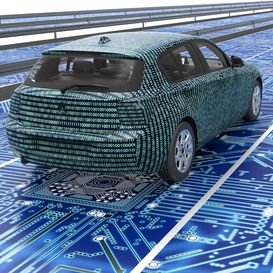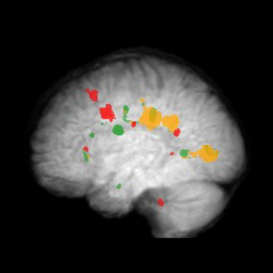PIANiSM
Pioneering predictive maintenance for a smarter future in manufacturing

- Project
start
November 2018 - Project
end
June 2022 - Project
leader
Serkan Tosun
KocDigital Solutions Inc., Türkiye - More
information
https://itea4.org/project/pianism.html
Predictive maintenance (PdM), using data-driven, proactive maintenance techniques designed to analyse the condition of equipment and helping to predict when maintenance should be performed, offers benefits across many fields, from manufacturing to mining to automotive. By predicting issues before they occur, companies avoid wasting time and money on repairs and downtime, allowing them to be more efficient throughout their operations. However, most of these solutions are domain or problem-specific, with implementation costs and complexity serving as obstacles to uptake. To disrupt traditional maintenance processes, domains such as data science, machine learning, analytics, simulation and real-time processing must be combined in one system.
The ITEA project PIANiSM, uniting 14 partners from Canada, Portugal, Spain and Türkiye, aimed to merge predictive and prescriptive maintenance techniques to achieve an end-to-end automated manufacturing process and optimise end-to-end manufacturing value chains. In doing so, it has identified and introduced missing analytics techniques and algorithms and introduced a new generation of data identification integration and modelling processes.
Unveiling the architectural marvel
PIANiSM’s backbone lies in the developed architecture, a sophisticated framework comprising four layers for data acquisition, data pre-processing, model development and applications. In the data acquisition layer, an equipment gateway gathers data from external sources such as industrial or sensing devices and stores it in a data lake or sends it through an online stream. Filtering, cleaning, quality checks, interpolation and aggregation occur in the data pre-processing layer, resulting in an organised data lake or stream. In the model development layer, feature engineering, partitioning, prediction data modelling and failure model deployment take place using techniques such as loss estimation, change detection and failure scoring/ prediction. Here, different models have been developed for the needs of different use-cases and are stored in a model database. Finally, the application layer allows for data exploration, containing a model editor, system configurator, data analytics application programming interface and the connection to user applications.
Using this architecture, PIANiSM's technical partners – KoçSistem, ERSTE, ISEP, Experis, Sistrade, Nimbeo and B3 Systems – have each developed separate solutions for exploitation. KoçSistem, for instance, has supplemented its existing big data platform, Platform 360, with a PdM module that uses techniques such as data mining and model management to produce predictive maintenance reports, failure prediction and maintenance plans. A big automotive customer, that was already using Platform 360 before, has purchased the PdM module after the PIANiSM project. Thanks to the updated Platform 360, the accuracy ratio of fault detection at this customer increased up to 84%, meaning the customer had information about these faults before they occurred and enabling the organisation to take the needed precautions in time.
Introducing a collaborative framework integrating data science, machine learning, and real-time processing within PIANiSM, Turkish SME ERSTE enhanced predictive maintenance in manufacturing. Leveraging insights from PIANiSM, ERSTE advanced further in other RD&I projects including ITEA project MACHINAIDE, and extended AutoML-powered solutions for streamlined equipment maintenance decisions.
Demonstrating versability across industries
Since the most important focus of the PIANISM project is the predictive maintenance concept, it was of great importance to have diverse data sets that include different countries and sectors. For this reason, the project involved nine different use-case partners.
One of these partners was Portuguese plastic film manufacturer Vizelpas, which supplied production and equipment data for the development of ISEP’s predictive maintenance algorithms and enhanced Sistrade’s monitoring tools, providing manufacturing expertise and feedback as required – all with a high degree of interaction and strong spirit of collaboration within the international consortium. This resulted in a set of algorithms and tools that could provide predictive insights and reports on equipment usage and maintenance to improve Vizelpas’ equipment awareness capabilities. A strong impact has since been felt at an operational level as the company has successfully improved both the mean time between failure (MTBF) and the time taken to repair equipment. Increasing the uptime of equipment means a greater ability to meet the demands of customers, with a knock-on reduction in maintenance costs and a smaller parts inventory. From a human perspective, this also allowed Vizelpas to divert human resources away from manual equipment control and maintenance to higher value tasks. The implementation success is more evident in the extrusion process, where the MTBF increased by 15.8%, and the mean time to repair (MTTR) decreased by 11%. In addition to this, the precise online control of equipment conditions and the reduction of unforeseen downtimes mean less waste generation and decreased energy consumption. Notably, Sistrade’s monitoring tool integrates real-time warnings on equipment functioning, enabling the prompt action of Vizelpas operators when needed. From another perspective, the subsequent decrease in carbon emissions is just one of many ways in which PIANiSM is disrupting the downsides to traditional maintenance and laying the foundation for a more positive future.
Overall, PIANiSM has produced usecases on ceramics, automotive, energy/ refineries, durable consumer goods, piping, plastic film/flexible packaging and data networks and has successfully demonstrated its system prototypes in an operational environment (TRL 7).
PIANiSM's impact extends beyond industrial realms; it’s about empowering businesses, transforming lives, and envisioning a future where manufacturing not only thrives but also sustains.
Better prediction, costs savings and competitive advantage
Thanks in part to the project’s wide scope, PIANiSM has been able to expand and improve on predictive maintenance services in a variety of ways. In terms of improvements, PIANiSM has worked with a worldleading automotive client on better prediction and has achieved an 80% success rate (versus a starting point of zero). These types of improvements have a knock-on effect for the efficiency of end-users: refinery operator Tüpraş, for example, has applied KoçSistem’s technical outputs to its heater charge pumps, resulting in a decrease in mean time to repair by 3.59 days and a decrease in maintenance costs by USD 5,134 per failure. For companies that take up PIANiSM’s results, the benefits are focused not only on the cost savings of decreased downtime and fewer repairs but also on the competitive advantage of faster turnarounds and the opportunity to open up new business models through the greater reliability that predictive maintenance offers. The latter is particularly significant for SMEs, which have traditionally been confined to reactive maintenance because of the former costs and difficulty of integrating PdM solutions.
PIANiSM partners are now in the process of offering these solutions to new and existing clients but have already shown early promise, such as KoçSistem’s signing of a contract with the major automotive client to extend their machines worldwide. Over the next five years, the consortium anticipates a strong sales increase through the introduction of PIANiSM related technologies (including roughly 100% sales growth for companies in manufacturing and 80% for IT and software), as well as a more than doubling of the international market share in some sectors. For instance, the success of Vizelpas provided Sistrade with new ways to expand its market reach and to enhance its enterprise resource planning (ERP), with two more clients currently engaged in the development and evolution of the updated monitoring and maintenance modules of Sistrade.
In order to achieve these forecasts, strong dissemination has also taken place, including a paper on the project’s architecture that was presented at the IEEE Industrial Electronics Society annual conference (IECON 2021) and customer workshops for both Platform 360 and the PdM module. Additionally, PIANiSM resulted in two PhD theses, one master’s theses and course material for the ISEP engineering research institute. Currently, there are 40 students of the Master in Engineering and Artificial Intelligence and 15 students did a short course in Predictive maintenance. Having successfully identified new needs in model development, such as auto-encoder neural networks for anomaly detection, the partners will use these results as a springboard to further improve PdM and expand it to new domains in both the short and long term.
The human touch
Beyond the technical details lies a human narrative of empowerment and transformation. PIANiSM’s impact extends beyond industrial realms; it’s about empowering businesses, transforming lives, and envisioning a future where manufacturing not only thrives but also sustains. The collaborative spirit, the blend of expertise, and the dedication to innovation signify a shift in paradigms, where stakeholders don’t just witness change but actively shape it.

Other chapters
Use the arrows to view more chapters

Editorial
By Jan Jonker

Country Focus: Austria
Tapping into innovative potential and using new knowledge for market growth

IT-V Medizintechnik
Achieving a better position in international innovation

ITEA Success story: PIANiSM
Pioneering predictive maintenance for a smarter future in manufacturing

Advancing gender equality in innovation
Insights for ITEA from Vinnova

ITEA Success story: EMPHYSIS
EMPHYSIS: Bridging the gap between digital simulation and embedded software with eFMI®

Community Talk with Jennifer Overbury
Smart project management in a technical domain

SME in the Spotlight: icometrix
Transforming neuroimaging with AI

End user happiness: Mad@Work
Digital solutions enhancing personal well-being and organisational success

